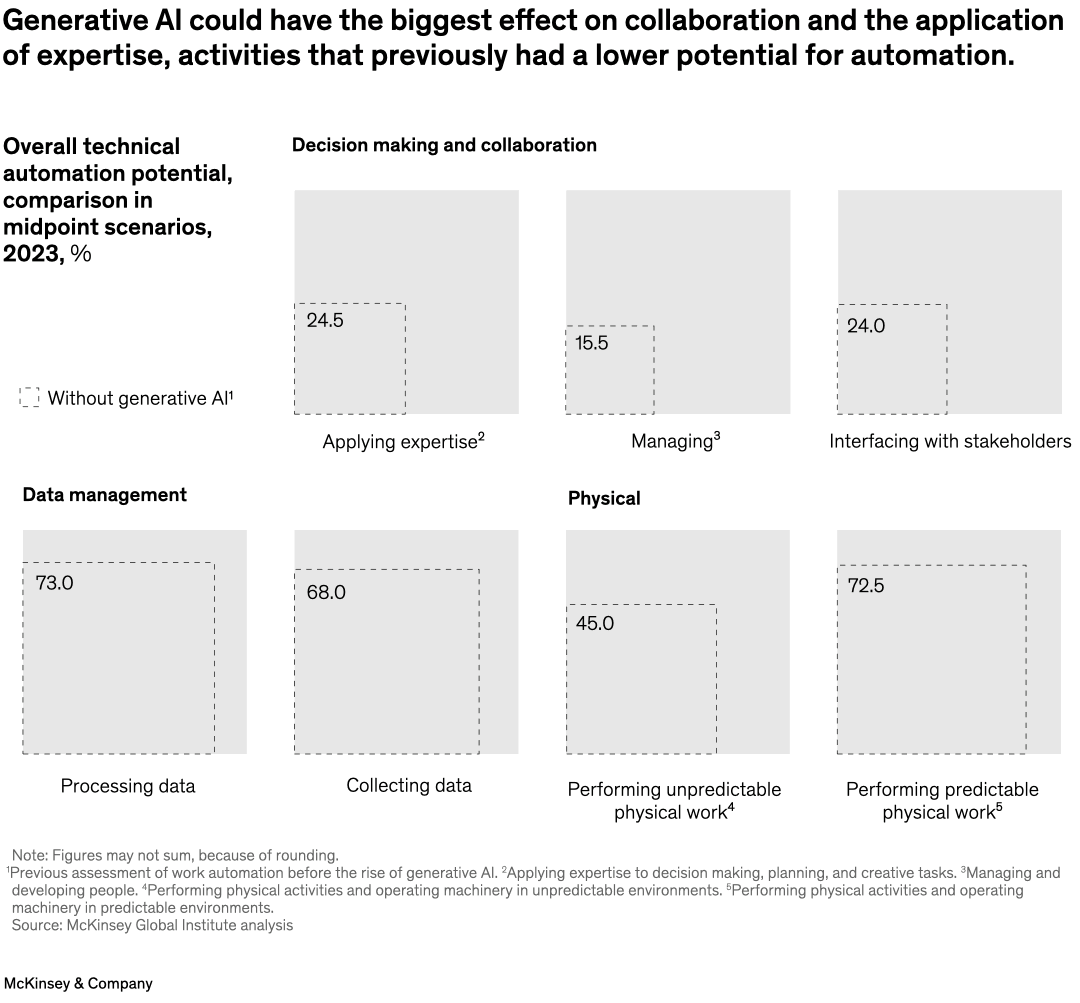Knowledge workers, prepare for automation. While previous generations of automation technology were largely aimed at data management tasks, generative AI’s natural-language capabilities position it to automate activities in knowledge work, senior partner Lareina Yee and coauthors explain. The application of expertise, for example, jumped 34 percentage points in automation potential this year.

Image description:
A chart with 7 squares compares the overall technical automation potential of 7 types of work, with and without generative AI (gen AI) as a factor, proportioned as a share of 100%. The first 3 comparisons, classified as decision making and collaboration, are: applying expertise, 24.5% without gen AI and 58.5% with gen AI; managing, 15.5% without gen AI and 49.0% with gen AI; interfacing with stakeholders, 24.0% without gen AI and 45.0% with gen AI. The next 2, classified as data management, are: processing data, 73.0% without gen AI and 90.5% with gen AI; collecting data, 68.0% without gen AI and 79.0% with gen AI. The final 2, classified as physical, are: performing unpredictable physical work, 45.0% without gen AI and 46.0% with gen AI; performing predictable physical work, 72.5% without gen AI and 73.0% with gen AI.
Source: McKinsey Global Institute analysis.
End of image description.
To read the report, see “The economic potential of generative AI: The next productivity frontier,” June 14, 2023.